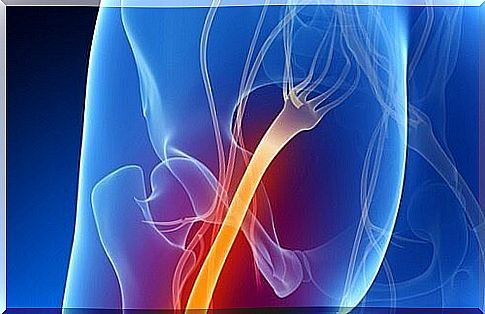How Do I Know If I Have Sciatica?
Since certain symptoms coincide with other ailments and disappear again over time, a specialist should be consulted to determine whether it is really sciatica. So the right treatment can be initiated.

There are diseases that are easy to diagnose while in others the symptoms can be misleading, as is the case with sciatica. Leg pain can be caused by exhaustion and overexertion, but it can also be a symptom of sciatica , which should not be overlooked.
If you have pain in the back of your leg, be careful. If the leg is numb to the foot and tingles, and the pain worsens when you cough or sneeze, it could be sciatica.
Sciatica is not a disease, but it is a debilitating health problem. Unless there is severe pain in one leg and back, it is difficult to diagnose. So how do you recognize sciatica?
1. Weak knee

The pain can only be felt in one knee and radiates to the entire leg. If both knees are affected, which is rare, medical treatment is necessary immediately.
In emergencies, immediate surgical intervention is required, but the pain usually only occurs in one leg, which is triggered by compression of the nerve.
The sciatic nerve begins on the spine and ends on the foot. If pressure is applied to him, functions are disturbed and sciatica occurs. Various unpleasant symptoms occur: pain, weakness and tingling.
The pain alone is very common. The situation is alarming when this is accompanied by weakness, which is an important signal for the doctors and also for you.
2. You can no longer walk
In athletes, it is difficult to determine if a sore leg is a symptom of sciatica. The reason is that sciatica and piriformis syndrome have similar symptoms, with the latter being much more common.
In both cases, there is tingling, pain, and numbness all over the leg. It could also be another condition, so you should consider seeing a doctor.
Not paying attention to your body’s signals could make the situation worse.
Even if exercise is healthy, watch out for pain or discomfort. Better to be on the safe side and rule out a trivial matter than having to stop your sporting activity due to carelessness.
3. You are in pain

Pain is very common, but it is also one of the main symptoms of sciatica. So when you go to the doctor, you should be able to explain your symptoms clearly to him.
It is not enough here to simply express that you are in pain.
Pain can have a variety of causes and is not solely due to sciatica.
The doctor Jacob Teitelbaum ( “Real Cause, Real Cure: The 9 root causes of the most common health problems and how to solve them” ) has developed certain techniques to determine whether it is sciatica:
- Squeeze the lower back muscles with your thumb.
- Identify the points that are causing the pain.
- If the pain is like a bump that goes down to the feet, then it may be sciatica.
4. Do this test
Lie on the bed with your legs straight. With the help of another person, lift your straight leg between 30 and 70 degrees. Your helper should be the one raising the leg.
If you experience pain all over your leg on this test, from the back of your knee to your toes, then it is a sign of sciatica.
See a medical specialist or physical therapist to repeat the test. Be aware that jerky or incorrect movements can make the situation worse.
5. Your body has abnormal symptoms

In addition to pain in the back, knees and legs, functions of your body can be disturbed. Have you noticed changes in bowel or bladder functions?
Doctors warn that this could be an emergency that requires immediate surgery. However, this situation occurs very rarely.
If the spine is putting too much pressure on your bladder, it could affect your bladder or intestines. Ask your doctor as the damage can be long lasting.
The good news: sciatica is going away
Sciatica disappears in 80% of cases. The reasons are still unclear, either the intervertebral disc is returning to its normal position or the symptoms of the nerve have subsided.
Be patient and follow your doctor’s gymnastics instructions so you don’t have to take too many anti-inflammatory drugs.
Unfortunately, you have to assume that the symptoms can last more than 3 months. This is why it is important to see a doctor and heed his advice, even if the pain goes away for a short time.









